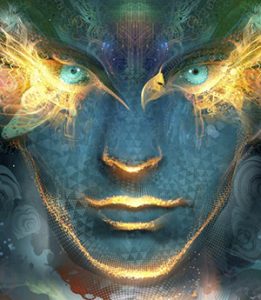The most interesting experience we get in a dream. We sleep a third of life. All people see dreams, but the vast majority of them do not remember. In order not to get that in a dream we know about us awake more than in a waking state we know about us sleeping, these three facts are supplemented by other interesting facts in the open article “Interesting facts about sleep” of the project CD.
In ancient times, people attached great importance to dreams. During the military campaigns of the commanders were accompanied by interpreters of dreams. The dream could have been submitted to the Senate.
We no longer believe that high-ranking people are necessarily subscribed to the live broadcast from the events in the web of meanings, people, gods, past and future. But what is something breaks on the side of the wakefulness – fact. A chemically pure sample of such a case is a table of chemical elements, which, strictly speaking, is a dream of Dmitry Ivanovich Mendeleev.
Today we know a lot about sleep and dreams.
Everyone can add an interesting fact about sleep, rank the facts in the article, add them in the comments.
#1 Listening to music before going to sleep is useful
 People who listen to music before going to sleep, fall asleep faster, sleep longer, rarely Wake up at night. Music affects the parasympathetic nervous system and relaxes the muscles.
People who listen to music before going to sleep, fall asleep faster, sleep longer, rarely Wake up at night. Music affects the parasympathetic nervous system and relaxes the muscles.
The regularity of falling asleep to the music enhances its relaxing effect, developing a habit. The body begins to perceive relaxing music as a conditioned reflex for sleep.
It is better not to listen to fast music with a rhythm of 60 to 80 beats per minute.
#2 the Phase of bodily paralysis during sleep
 There is the phase of dreams, which is called the phase of rapid eye movements, REM. It is at this time that we see images that we remember as a dream. The phase of rapid eye movements takes 20-25 % of the time of night rest, that is 90-120 minutes. During BDG in the brain turns on a special mechanism that paralyzes the body. This helps to prevent unnecessary movements and possible injuries during sleep. When the phase of rapid eye movements ends, we can again move in a dream-turn from side to side, etc.
There is the phase of dreams, which is called the phase of rapid eye movements, REM. It is at this time that we see images that we remember as a dream. The phase of rapid eye movements takes 20-25 % of the time of night rest, that is 90-120 minutes. During BDG in the brain turns on a special mechanism that paralyzes the body. This helps to prevent unnecessary movements and possible injuries during sleep. When the phase of rapid eye movements ends, we can again move in a dream-turn from side to side, etc.
#3 Everybody dreams
 Dreams are seen by everyone who does not have extreme mental disorders. If a person is sure that he does not dream, it means that he forgets his dreams immediately after awakening. Deftly using a long-term skill, displaces them from consciousness as something irrational, uncontrollable, and therefore unnecessary.
Dreams are seen by everyone who does not have extreme mental disorders. If a person is sure that he does not dream, it means that he forgets his dreams immediately after awakening. Deftly using a long-term skill, displaces them from consciousness as something irrational, uncontrollable, and therefore unnecessary.
# 4 orgasm In dream
 In dreams, you can not only have sex and get pleasure from it, as in real life, but also to experience a violent orgasm without accompanying physiological processes. Sensations from sex in dream can be stronger, than in real life.
In dreams, you can not only have sex and get pleasure from it, as in real life, but also to experience a violent orgasm without accompanying physiological processes. Sensations from sex in dream can be stronger, than in real life.
#5 the Symbolism of dreams
 We very rarely see in a dream a familiar everyday things and situations. Even when we dream something, it would seem, familiar, in a dream, this object of the dream takes on a completely different meaning.
We very rarely see in a dream a familiar everyday things and situations. Even when we dream something, it would seem, familiar, in a dream, this object of the dream takes on a completely different meaning.
Dreams are deeply symbolic, in a dream we find ourselves in the space of primary archetypes. Dreams can be an important marker of our relationship with reality.
#6 Blind people and dreams
 People who once had vision but are blinded can dream about spatial and color images. Born blind pictures do not see, but their dreams are very vivid impressions associated with sound, smell, touch and emotions.
People who once had vision but are blinded can dream about spatial and color images. Born blind pictures do not see, but their dreams are very vivid impressions associated with sound, smell, touch and emotions.
#7 We dream of people we know
 The mind can’t come up with a new character that we wouldn’t meet in our lives. We only dream of friends. But I can dream about the ones we don’t remember or forgot. Throughout our life we meet a huge number of people, hundreds of thousands of faces pass in front of our eyes.the part of consciousness that is in charge of dreams has no shortage of material for building a variety of symbols and images.
The mind can’t come up with a new character that we wouldn’t meet in our lives. We only dream of friends. But I can dream about the ones we don’t remember or forgot. Throughout our life we meet a huge number of people, hundreds of thousands of faces pass in front of our eyes.the part of consciousness that is in charge of dreams has no shortage of material for building a variety of symbols and images.
#8 Color and black and white dreams
 Research from 1915 to the fifties of the 20th century showed that 12% of people see exclusively black and white dreams. The picture has changed since the 60s. Today, 4.4% of people see black and white dreams. Most likely, such changes are due to the fact that black-and-white films have given way to color films, television and other media using color images have appeared.
Research from 1915 to the fifties of the 20th century showed that 12% of people see exclusively black and white dreams. The picture has changed since the 60s. Today, 4.4% of people see black and white dreams. Most likely, such changes are due to the fact that black-and-white films have given way to color films, television and other media using color images have appeared.
#9 You should Study before going to bed
 In a dream in the hippocampus-memory center-fixed recently acquired neural connections. During the slow sleep is the reactivation of experiences and their transition into long-term memory. During REM sleep, the memories are stabilized.
In a dream in the hippocampus-memory center-fixed recently acquired neural connections. During the slow sleep is the reactivation of experiences and their transition into long-term memory. During REM sleep, the memories are stabilized.
Fresh memories are better. If you study before going to bed, the material will be remembered for a long time.
#10 at Night we often Wake up
 Every night we Wake up to 15 times. This happens when we move from one stage of sleep to another. Moments of awakening are so short that we do not realize and do not remember.
Every night we Wake up to 15 times. This happens when we move from one stage of sleep to another. Moments of awakening are so short that we do not realize and do not remember.
This is a very interesting topic, found a lot of useful. I look forward to continuing, hoping to see it.